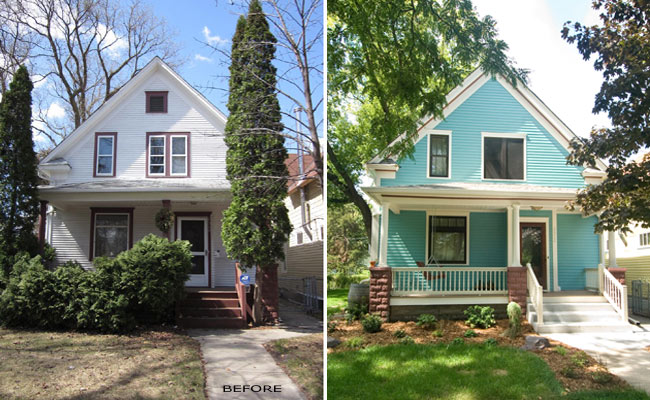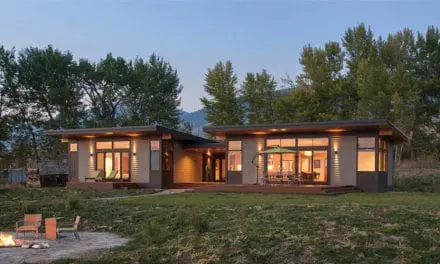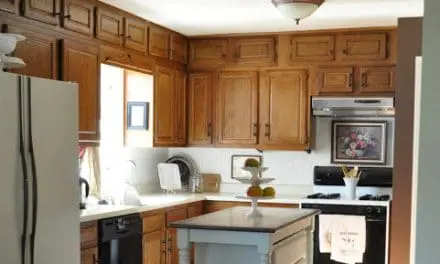Vujovich (Voy-o-vich) Design Build tackled a full renovation of this historic home in Minneapolis, Minnesota. Originally built in 1909, this home has been returned to its original charm, only now with a high performance and low impact spin. Inside and out, a thoughtful green remodel shows that sustainable living doesn’t mean sacrificing beauty or comfort.

Testing in with an initial HERS score of 127, the homeowners and the design build team knew vast improvements could be made. Through third party energy rating and design modeling, the home now achieves a HERS score of 59, garnering a 5-Stars Plus rating and qualifies as an EPA Energy Star Version 2 home.

What else makes this home more eco-friendly than most?
-
-
- Rain garden – According to the Rain Garden Network, “A rain garden is a shallow depression that is planted with deep-rooted native plants and grasses. The garden should be positioned near a runoff source like a downspout, driveway or sump pump to capture rainwater runoff and stop the water from reaching the sewer system.” Any pollutants in the rainwater are broken down by the plants, mulch and soil and made inert (not harmful).
- 90% fluorescent and LED lighting to reduce energy use
- Low flow plumbing fixtures to reduce water use
- Low VOC finishes to protect indoor air quality
- Rain barrels – Rain barrels capture rain runoff from a home’s roof that can later be used to irrigate landscaping.
- Green roof – According to the U.S. Environmental Protection Agency, a green roof, or rooftop garden, is a vegetative layer grown on a rooftop. Green roofs provide shade and remove heat from the air through evapotranspiration, reducing temperatures of the roof surface and the surrounding air. Additional benefits include:
- Reduced energy use: Green roofs absorb heat and act as insulators for buildings, reducing energy needed to provide cooling and heating.
- Reduced air pollution and greenhouse gas emissions: By lowering air conditioning demand, green roofs can decrease the production of associated air pollution and greenhouse gas emissions. Vegetation can also remove air pollutants and greenhouse gas emissions through dry deposition and carbon sequestration and storage.
- Improved human health and comfort: Green roofs, by reducing heat transfer through the building roof, can improve indoor comfort and lower heat stress associated with heat waves.
- Enhanced stormwater management and water quality: Green roofs can reduce and slow stormwater runoff in the urban environment; they also filter pollutants from rainfall.
- Improved quality of life: Green roofs can provide aesthetic value and habitat for many species.
-
Click through to learn more and see all of the project photos.
Vujovich first started going green by using reclaimed barn wood for floors, cabinetry and millwork back in 1987 and has since played a leadership role in bringing green and sustainable expertise to the Twin Cities through their LEED and MN GreenStar professional staff. They pride themselves for staying on the cutting edge with techniques, materials, and technologies for green and sustainable construction.






![10 Steps Toward a Zero Energy Home [Infographic]](https://elemental.green/wp-content/uploads/2016/04/cbfb-440x264.jpg)

